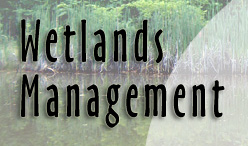|
|
|
|
|
|
Wetland types |
|
Bottomland hardwoods |
|
Functions and values |
page 6 of 7 |
Bottomland Hardwoods serve a critical role in the watershed
by reducing the risk and severity of flooding to downstream
communities by providing areas to store floodwater. In
addition, these wetlands improve water quality by filtering
and flushing nutrients, processing organic wastes, and
reducing sediment before it reaches open water.
Bottomland hardwood forests are a complex natural community
with many beneficial ecological functions. Regular flooding
along river basins creates a natural flow-through system
that connects the headwaters of rivers to coastal estuaries.
Nutrients, silt, and tiny organisms move between waterways
within the system. Flooding of low-level areas in bottomland
hardwoods provides a place for excess water to go, which
helps to control major flooding of main river channels. The
wet underground soils also help to filter out pollutants and
recharge the water table.
Bottomland hardwoods can be
managed as green tree
reservoirs or be left natural. |
|

